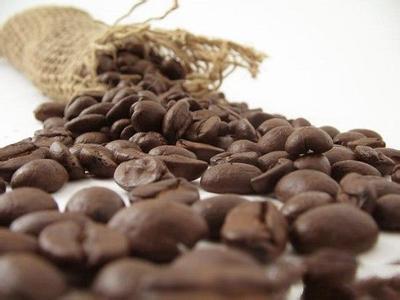Which country invented instant coffee? Instant Coffee History Story is instant coffee refreshing?

The history of instant coffee
In 1901, instant coffee was invented by SaetoriKato, a Japanese scientist working in Chicago, USA.
GeorgeConstantLouisWashington invented the technology for mass production of instant coffee and brought it to market in 1910.
In order to deal with the surplus of coffee beans, the Brazilian government and Nestle developed a more advanced spray drying method for the manufacture of instant coffee in 1938. The specific method is to use hot steam to vaporize the water in the coffee beans, leaving the dry coffee extract. Instant coffee can quickly dissolve in hot water, and it takes up less space and volume in the process of storage and transportation, so it is more resistant to storage, so it is popular in the mass market.
Instant coffee was first used in the battlefield of World War II, when allied soldiers used instant coffee as a daily drink, which improved efficiency to a certain extent.
However, because inferior coffee beans are often used in industrial production, and other harmful residues may be left in the production process, it is not recognized by the traditional coffee industry in many cases. In addition, the roasting degree of instant coffee to coffee beans is often not enough, stay in a relatively primary stage, can not fully reflect the aroma of coffee beans.
The practice of instant coffee
In 1930, the Brazilian Coffee Institute consulted with the Swiss company Nestle and asked them to find a way to produce a dry coffee that was heated and stirred to become a drink. Nestle spent eight years doing research. They found that the most effective way is to spray the best extract of espresso through a hot air ejector. The heat evaporates the moisture in the coffee extract, leaving dry coffee grains. This powder has become a popular drink because it dissolves easily in boiling water. The new instant coffee was put on the market under the name Nestle, a famous brand that has been famous all over the world since then.
Nowadays, solidification drying is also used in the life of instant coffee. This method involves solidifying the coffee and then evaporating the water. The manufacturing process was invented in 1906, but it was not widely used until recent decades. Manufacturers claim that this method preserves more of the original taste of coffee.
Tips for instant coffee
Pour a bag of instant coffee into the cup and add a little salt (about the size of a thumbnail) to make the coffee taste more delicious and smooth.
The harm of instant coffee
The first is essence:
This should start with the production process of instant coffee.
Instant coffee is produced by drying after extracting active ingredients from roasted coffee beans. In this process, some aromatic substances will inevitably be lost, so that the flavor and taste of the finished product is not as rich and pure as that of directly roasted coffee.
Its production process is generally as follows
Pretreatment, →, roasting, → grinding, → extraction, → concentration, → drying.
The pretreatment is to remove impurities.
In the process of culture and frying, the substances contained in coffee beans undergo complex physical and chemical reactions to form unique coffee aroma substances. After grinding, the effective ingredients in the coffee are extracted into the water at a certain temperature and pressure. Through vacuum concentration, it is convenient for drying process.
Drying, which is the forming process of instant coffee powder, is also the process that has the greatest impact on the quality of coffee powder. At present, spray drying is generally used, but because the aromatic substance of coffee is very sensitive to heat, it is very volatile at high drying temperature (there is a certain volatilization in the process of extraction and concentration). This is the main reason why instant coffee is not fried and ground coffee has a strong aroma.
The above is only the production process, during which it is found that the aroma of coffee has been lost in the operating environment of many times of high temperature. So how to make up for it? It's the essence. Manufacturers add flavors in the process of extraction, concentration or drying (depending on the manufacturer, some companies are one of the steps, some are multi-step flavors).
The second is the quality of coffee beans:
We know that more than 90% of the coffee beans on the market are grown from the following two kinds of coffee beans: Arabica (CoffeaArabica) and Robusta (CaffeaRobusta).
Coffee trees planted in Arabica are suitable for planting on fertile hillsides with good drainage at an altitude of about 1000 to 2000 meters. During the day, they like mild but not very hot temperatures and less than two hours of direct sunshine every day. If there is a lack of afternoon thunderstorms or thick fog to report to the mountains every day, farmers have to plant many taller trees in the coffee garden to shade and prevent frost.
At night, they want to have an environment that is cold to about ten degrees Celsius but not too low, because? Too warm will cause the coffee berries to grow too fast to produce small, strong, hard, high-quality coffee beans, but if it is too cold to frost, the coffee trees will freeze to death.
The conditions for its cultivation are very strict, so Arabica coffee produced in different regions, different elevations and different climatic areas usually has its own characteristics. It smells like grass when it is not roasted, and after proper roasting, it shows "fruity" (medium-shallow roasting) and "caramel sweetness" (deep roasting).
The coffee trees planted by Robusta can grow on flat land about 200 to 300 meters above sea level. their leaves and flowers are slightly different from those of Arabica, and wild trees are on average one or two meters taller than Arabica. It has strong resistance to disease and high temperature, and its yield is also high.
Generally speaking, the flavor of Robusta beans is poor, sour and rigid, and the flavor produced by different regions and climates does not vary much. when it is not baked, it smells like raw peanuts. The taste after baking is usually between "wheat tea" (medium baking) and "rubber tire flavor" (deep baking), so it is difficult to show meticulous flavor. So its price is only half that of Arabica beans.
Because of the cost, instant coffee of course chooses Robusta coffee, which is produced in Vietnam, Hainan, Yunnan and some African countries. In addition, broken beans, bad beans and maldeveloped varieties are often baked and ground directly without screening. Anyway, it is only the extraction of caffeine, and the lack of aroma can also be reconciled by all kinds of flavors and additives, which results in the poor quality of coffee beans that make instant coffee.
Important Notice :
前街咖啡 FrontStreet Coffee has moved to new addredd:
FrontStreet Coffee Address: 315,Donghua East Road,GuangZhou
Tel:020 38364473
- Prev

Introduction to the types of coffee the Royal Copenhagen Gourmet Coffee
In Copenhagen, the capital of Denmark, Copenhagen is a palace in fairy tales and a destination of fashion sports. It is old but not old-fashioned, prosperous but not flashy, joyful but not annoying, conniving without losing control. Reason and joy dominate everything. Denmark is located at the mouth of the North Sea and the Baltic Sea. Although the country is small, it has many islands, more than 400 large and small islands and more than 7400.
- Next

Coffee common sense world famous brands of instant coffee
The origin of coffee Coffee originated in Ethiopia. It was used as a beverage in North Africa and West Asia for hundreds of years before it was introduced into Europe in the 17th century. Coffee plantations have been set up in all hot and humid parts of the world, and coffee has become a popular drink. But it takes a lot of days to make a pot of delicious coffee. Coffee beans must be ground into fine powder. You'd better use it.
Related
- Beginners will see the "Coffee pull flower" guide!
- What is the difference between ice blog purified milk and ordinary milk coffee?
- Why is the Philippines the largest producer of crops in Liberia?
- For coffee extraction, should the fine powder be retained?
- How does extracted espresso fill pressed powder? How much strength does it take to press the powder?
- How to make jasmine cold extract coffee? Is the jasmine + latte good?
- Will this little toy really make the coffee taste better? How does Lily Drip affect coffee extraction?
- Will the action of slapping the filter cup also affect coffee extraction?
- What's the difference between powder-to-water ratio and powder-to-liquid ratio?
- What is the Ethiopian local species? What does it have to do with Heirloom native species?

